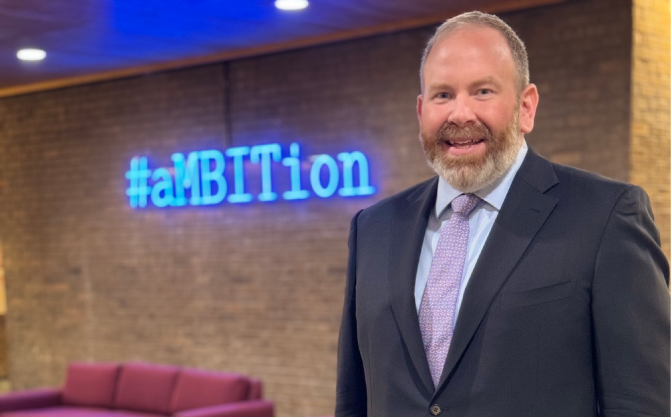Dr. Mark Covelle: Branding with Ambition
How one career and technical education center empowers students to help craft their brand
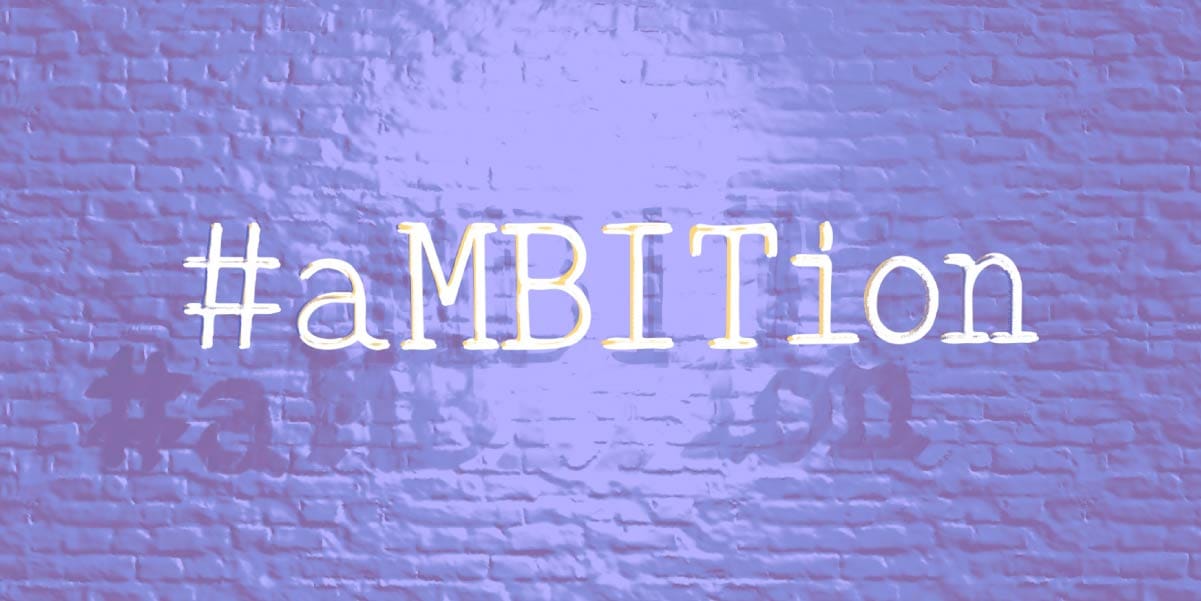
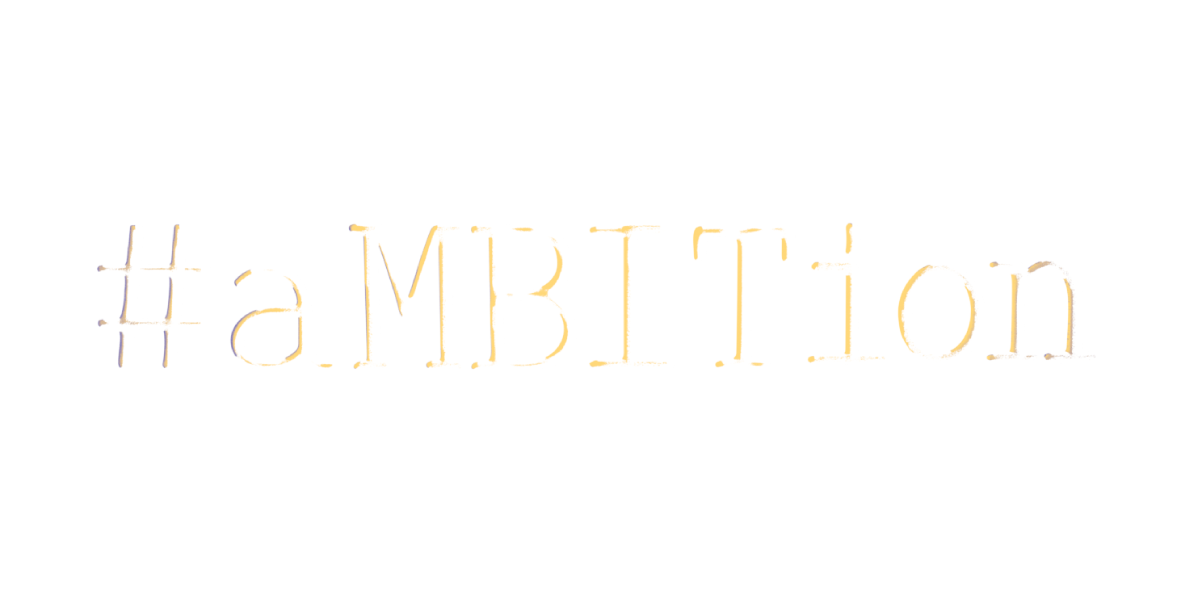
Dr. Mark Covelle
Branding with Ambition

Dr. Mark Covelle is a classically trained educator with degrees in English and secondary education from Boston College, as well as advanced degrees in education and educational leadership from Lehigh University, Wilkes University and Drexel University. His path as an educator quickly led him to building leadership. In 2018, he landed his first role in the world of career and technical education (CTE). Today, he serves as the administrative director for Middle Bucks Institute of Technology (MBIT) in Pennsylvania.
So often, perceptions about what happens in career and technical centers are incomplete. Folks might envision the hammers swinging in our carpentry program, but not think about our student-run philanthropy club. They may imagine sparks flying in our welding program, but not the patent-holding inventors in our engineering lab.
At Middle Bucks Institute of Technology (MBIT), we feel passionately that sharing our authentic story is critical. If we do not share what actually happens in our building, people are only left with what they think happens. When I say that we teach the trades, minds often envision jobs that are dirty or unsafe, rather than the bright, modern, lucrative opportunities we actually have to offer. We need to find a way to tell our story and share our authentic message.
That’s why I have made it my personal mission to change tired and outdated perceptions about CTE. But it’s not a mission I can accomplish alone.
A Moment of aMBITion
When I arrived at MBIT in the fall of 2022, I didn’t find a clear message or brand mark that our community could easily consume or identify. In the back of my mind was the work of Dr. Joe Sanfelippo, the retired superintendent of Fall Creek School District in Wisconsin. Now a well-known educational speaker, Joe has often shared how Fall Creek used their hashtag #GoCrickets as a way to identify and celebrate their schools. I wondered if we couldn’t take a similar approach to strengthening our brand, specifically on social media.
So on the bus ride home after a regional seminar, I posed the question to a group of our student leaders: “What tagline or hashtag could we use to help people understand what we do at MBIT?” I expected to debrief at the group’s next monthly meeting. But first thing Monday morning, Jenna, a student from the medical and health professions lab, entered my office with calm confidence. “Did you know that the letters M, B, I and T are in the middle of the word ‘ambition’?” she asked—to which I answered, “I do now!”
I wrote the word down, putting a little extra emphasis on the four letters that symbolized our school: aMBITion. That was it. What are students pursuing at our school? What are we encouraging? What happens when you pair your education with your passion? Ambition.
Now, we use #aMBITion whenever and wherever we can. It even hangs in our lobby as a 10-foot-long LED neon sign so that anyone who enters our building knows what we’re about. The reaction is universal—“That is so smart!”—and I get to share that the hashtag was 100% student-generated. In the end, #aMBITion was more than a catchy play on letters. It was—and is—a student-driven, identity-shaping, authentic brand message.
Why Brand Matters For MBIT
For a long time, career and technical education has been considered an alternative to traditional K-12, a place for students who aren’t going to college. As an English teacher in a classic K-12 setting, I probably reinforced those perceptions in my own classroom. It wasn’t until I saw the truly authentic learning, the standards-based educational practices, the attainment of industry-recognized credentials and the deep levels of engagement these schools generate that my mindset shifted. This generation of learners craves authenticity and purpose—something CTE delivers every day.
As perceptions continue to evolve and CTE experiences a moment in the spotlight, we wanted to make sure we were presenting a clear picture of our school, its opportunities and its benefits. We wanted to highlight our incredibly talented faculty members, many of whom gave up more lucrative jobs in their fields to train the next generation. Most importantly, we wanted our community to know that our school doesn’t close doors for students—it opens them.
So we started looking more closely at our branding. We had our catchy hashtag; next, we wanted to increase our volume of social media outputs. We did this to ensure that if someone was looking for us online, they would not only find us but also be greeted with a healthy amount of content.
What was—and still is—most important to us is communicating what really happens in our career technical areas and what opportunities exist for our students. Furthermore, since the majority of our funding comes from our member districts, it is incumbent on us to share the return they’re getting on those investments. Our branding and communication strategies are more than our mark or our message; they are our authentic story, vital to our continued success.
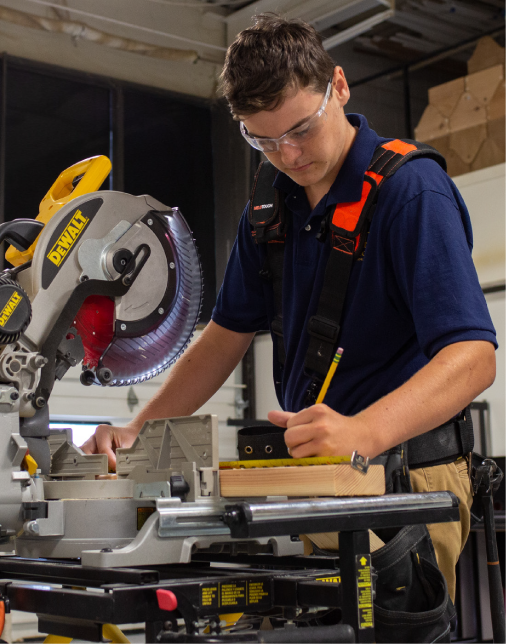
Involving Students to Shape the Message
As we began to focus more on our communication and branding outputs, we had two different challenges: producing the volume of content we needed to realize our vision and making that content relevant to our audiences. We knew that our students were our most prolific consumers and producers of social media. So Jeanise Dimitri, our community engagement and public relations coordinator, came to me with an idea: Rather than trying to casually involve our students, let’s involve them deeply, hiring them as official employees of the school in our PR office. When Ms. Dimitri volunteered to own the program herself, I was sold.
Our media associates, as they’re now called, are genuine employees of our school. They have to complete mandatory trainings and meet required clearances, just like our adult staff members. Because we offer cooperative education through our technical coursework, students can work as media associates for two hours a day, up to four days a week. They get paid employment, experience on their resumes, a portfolio of work and school credit for their technical programs. And as a bonus, our PR office gets more hands to help with the heavy lift of telling our story.
To be clear, our media associates do not have unfettered access to our social media credentials, nor the ability to post content without review. We have established very clear workflows that require all of their material to be reviewed before being published. This simple, but clear, delineation of responsibilities protects the interests of the organization. But that’s not to say our students don’t take on a lot of responsibility. They have made video content, online content, printed materials and marketing materials.
One of our first student producers, Anders, helped launch our podcast—entitled (you guessed it) “Ambitious”—giving our voice a place in the global space of career and technical education. Since graduating, he has continued to work with us as a college student, helping to produce episodes. He’s building a portfolio, a resume and a side hustle—and he’s doing it through the brand he helped build.
The students have consistently impressed us with their professionalism and creativity, using the skills they learned in either our multimedia technology or commercial art programs. Earning a co-op position with Ms. Dimitri has definitely become a coveted placement, drawing multiple interested students annually. “They help us tell the story of MBIT through a lens that’s more authentic and relatable to their peers,” she says. “They collaborate with me to create content that resonates not from an adult’s perspective, but from the viewpoint of the very students we’re trying to reach.”
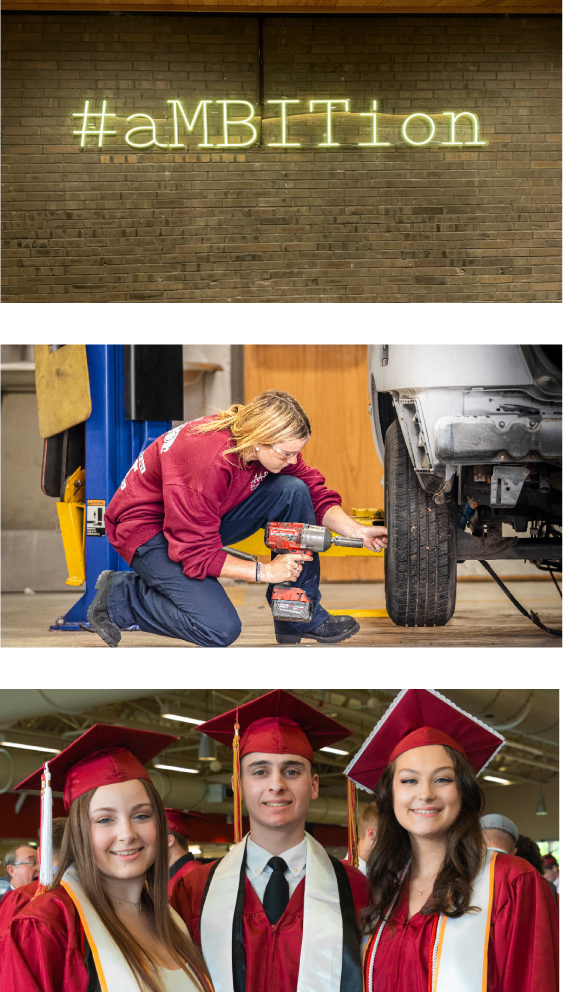
Advice to Fellow Leaders
I have had several schools and districts reach out to me about starting a media associates program, and I tell each of them the same thing: Our program is successful because it is specifically tailored to our school’s needs and abilities. You need to set up a program that meets your specific needs using resources that are available and sustainable in your organization. But with that caveat in mind, here’s my best advice:
It should be highly structured, at least to start. At first, our students meet with Ms. Dimitri daily. After the first few weeks, they continue to have frequent check-ins with her—not only so she can referee their work, but also to help them understand process and procedure.
Focus narrowly on a specific project and talk through the finer details so that your students learn your expectations and brand characteristics before you release them into more complex projects.
Identify the strengths of your team. Our associate Anders was a gifted audio and video producer, so this became the focus of his work. Emma, on the other hand, had a gift for student and staff interviews and social media creation. Allowing student associates to play to their strengths allowed our team to focus on other areas, such as printed materials and overall brand identity work.
Start small, stay structured, define expectations and set realistic goals. Results won’t be instantaneous. After all, having great student-influenced marketing means more than just hiring students; you must also provide the support necessary for them to be successful.
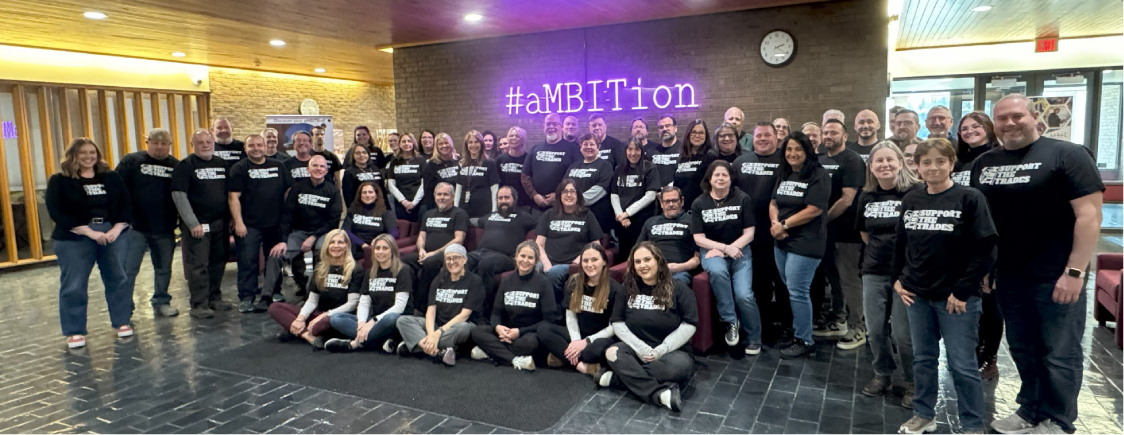
What I Learned
When I was hired at MBIT, I promised the school board that I would elevate the school in local, regional and national circles. Improving our messaging was and remains critical to meeting this goal. Our content creation has led to podcast downloads across the globe; viral social media posts; an authentic dialogue with our school community; and a place for our teachers and students to be seen, recognized and celebrated.
Authenticity is our North Star, and it is vital to share a clear message about the real work happening within our walls. Stories are unfolding every day at our schools that demonstrate what it’s really like here. Finding and sharing them is always worth it.
